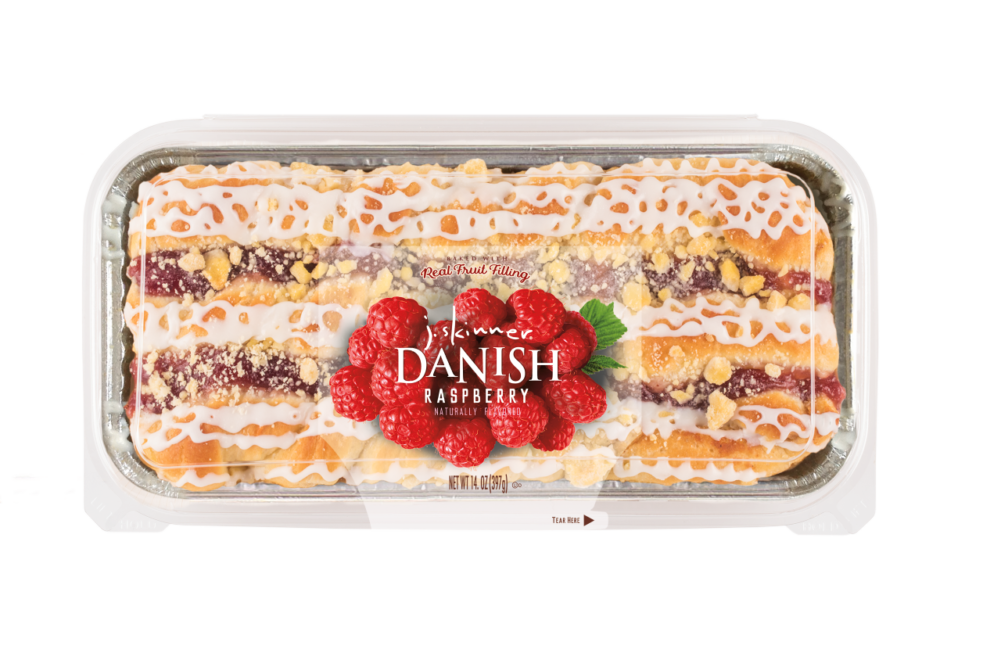The early days of the pandemic gave many consumers the opportunity to perfect their home baking skills, and consumers are still looking for ways to add quality bakery products to their at-home meals even as their schedules get busier. At the same time, consumers also desire to indulge within reason, and branded products found in supermarket instore bakeries are well-positioned to meet these trends.
When these trends are combined with the challenges supermarkets are facing with both staffing and space, retailers are increasingly looking to branded instore bakery products to drive growth.
“We help deliver an instore experience that doesn’t require any on-site bakers – perfect for the premium snacking opportunities,” said Paul Baker, founder of Manchester, UK-based St Pierre Bakery. “That’s how the perimeter will draw footfall back in a post-COVID environment. By highlighting authenticity, cross-selling with the breakfast, brunch, and snacking occasion products and clever merchandising, we are able to provide the tools for retailers to maximize sales and basket spend, which is sorely needed in the aftermath of a global pandemic.”
Finding permission to indulge at home
Given all these factors, Brie Buenning, director of marketing for Los-Angeles-based Aspire Bakery’s La Brea Bakery brand, said the market for take-and-bake bread options in grocery-store bakeries has increased more than 40% since the pandemic began.
“Customers are looking for convenient options to elevate at-home meals without having to make everything homemade,” Buenning said. “Take-and-bake allows consumers to quickly have great-tasting, fresh-out-of-the-oven bread right away or easily store it in the freezer for later.”
To this end, Buenning said La Brea’s most popular products are currently French baguettes in both fresh and take-and-bake varieties, take-and bake rolls, whole grain loaf, and country white sourdough. The sourdough product plays on the rise in popularity of sourdough during the pandemic, and the whole grain loaf is an option for those looking for fewer carbs.
The pandemic has also put a spotlight on the importance of breakfast items as consumers have enjoyed additional time to eat breakfast at home.
“The pandemic changed the way American shoppers are eating,” Baker said. “With people spending more time at home, meals like breakfast became a more important occasion. Instead of rushing to eat something and get on with the day, consumers started to explore and enjoy more elaborate breakfast dishes. Waffles are incredibly versatile and work well in sweet or savory applications, and as consumers started to experiment with new dishes, sales of versatile products increased.”
Citing data from Nielson, Baker said the US waffle market is now worth $1.1 billion, growing 16% from 2019 to 2021. Most notably, he said the ambient waffle market increased 205% during this period.
Baker also said brioche is now delivering $470 million to the US bakery category, up 20% from the previous year, according to Nielson data. He said St Pierre’s grilling range is especially driving their brioche products, and the pandemic has been instrumental in strengthening consumer desire for premiumization. Overall, he said the ambient bun category is worth $2.8 billion in the grocery market with brioche buns driving category growth.
“Savvy retailers will take note of where the growth is coming from and ensure their shelves offer multiple spaces to the products driving sales,” Baker said.
Baker said part of St Pierre’s success has also come from collaboration with retailers to offer customized products relevant products for their shoppers.
David Skinner, marketing manager for J. Skinner Baking Co., Omaha, Ne., said they are seeing a higher demand for products seen as “permissible indulgences.”
“Ultimately, the instore bakery is an indulgent department, and there’s a fine line to balance when you are marketing to the customer,” Skinner said. “In some ways consumers can perceive products that have too many health claims as not tasting as good. If you can embolden features like real sugar, no preservatives and no artificial colors or flavors, you are in a decent spot with the consumer.”
Skinner also said targeting specific market segments is a valuable strategy for an instore bakery brand. He said many instore bakery products are private label products, and to achieve exposure on the shelf, it’s essential to offer products that are innovative, unique and have a strong segment of consumer support.
Skinner said their most popular offering is currently Danish strips because of the product’s unique flavors and textures. He said many of the flavors of the product come from the dough, as the company manipulates the fermentation process and provides the dough the proper environment for the right amount of time. While letting the dough rest in a controlled environment for 24 to 36 hours may seem inefficient, it’s critical to providing unique flavors, he said.

